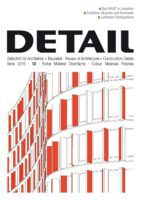Using light and color to inspire purchases
Color marketing
Visual media form the fabric of our perceptions and imaginations. They control about 60% of our brain activity, which we are rarely aware of, as we perceive our entire world through light and colors, in which we recognize people, things and spaces. Light and color create atmospheres that put us in the mood to buy. When used professionally, color and light can generate demand because they create passion and desire in customers and at the same time suppress rational decision-making processes. Colors create pleasure and joy, which we involuntarily transfer to content and products. But be careful! Used incorrectly, light and color can also have the opposite effect.
Marketing potential of color and light:
- Visualize brands and brand messages and transport them to the customer
- Generate attention and control behavior
- Arouse interest, stimulate thought processes and bring about consequences for action
- Generate positive emotions and lasting emotional connections
- Creating order, orientation and safety
- Stimulate appetite and convey enjoyment
- Stimulate desire and convey attractiveness
The power of colors
Our memory determines what a color means to us and how colors affect our thoughts and feelings. Colors determine the experience of self and environment. They influence our behaviour and control our actions, although we rarely recognize the cause of this “power of colors”. We can feel it when we eat “unappetizing colors”, wear “ugly colors” on our bodies or are expected to live in “tasteless colors”. Every person develops their own color preferences over the course of their life. We form a subjective repertoire of favorite colors through which we communicate something to our environment, with which we identify and through which we can distinguish ourselves. We use these colors specifically to achieve effects on the experience and behavior of other people. We do not use a single favorite color, but a palette of proven colors with which we can best achieve the desired effect. Colors, on the other hand, are only created by light and their dimensions of effect are determined by it. The effects of colors unfold with their brightness and contrast to their surroundings. In addition, many other influencing factors such as hue, saturation, gloss level or brilliance must be considered, which will not be discussed in detail here. As far as the psychological effects of colors are concerned, bright and achromatic colors are of equal value. In color marketing, the focus is on planning the effects. As colors influence each other and also interact with the quality of light, no direct consequences for the design process can be derived from this. The development of color and lighting concepts is a complex task that requires a high degree of professionalism that can only be achieved through specialist training and practical experience.
Study on the effect of the color white on experience and behavior
(Copyright and image rights Axel Buether)
Color psychology
In recent years, we have conducted the world’s largest study on the effects of colors at my Chair of Visual Communication at the University of Wuppertal. In the first step of our color psychology experiment, all participants examined the occurrence, use and meaning of the 13 basic psychological colors in nature and culture. The effects of the colors on our experience and behavior were then tested and documented in a self-experiment. The representative results were documented and systematically organized in more than 1 million images. An important aim of the study was to take stock of our everyday knowledge about colors. Research into the effects and meanings of colors was prevented in order to avoid influencing them. The question was which of the countless meanings of color handed down through cultural history have survived in the collective consciousness of modern societies and which have been added to this day. In the second step, a team of experts searched for biologically and culturally determined patterns and reconstructed an associative order of the individual colors. The main interest was in the spontaneous behavioral reactions of the test subjects, their gestures, actions and the places that they and we associate with the experience of a color. The current state of color research in perception psychology and neuroscience was taken into account. In the end, the meanings and meaning relationships found were brought together by a computer program in the form of memory maps (“color mind maps”) of the 13 colors examined, which is shown for this column using white as an example. The color mind map offers important clues for color marketing. It becomes clear that each color can convey a variety of effects that are defined by the way it is used and the context of the perceptual situation. Traditional color symbols are also easy to read in the graphic, as their effects can largely be traced back to the centrally arranged natural phenomena. When applying the “color mind map”, cultural differences must also be taken into account, as color effects and color preferences are shaped by socio-cultural, climatic and regional factors.
Conclusion:
Color and lighting concepts are successful if all influencing factors are taken into account and the right strategy is chosen for the location. Participatory project development methods such as design thinking are ideal for this if sufficient attention is paid to the level of reflection.
Design Thinking Atmospheres
(Copyright and image rights Axel Buether)





